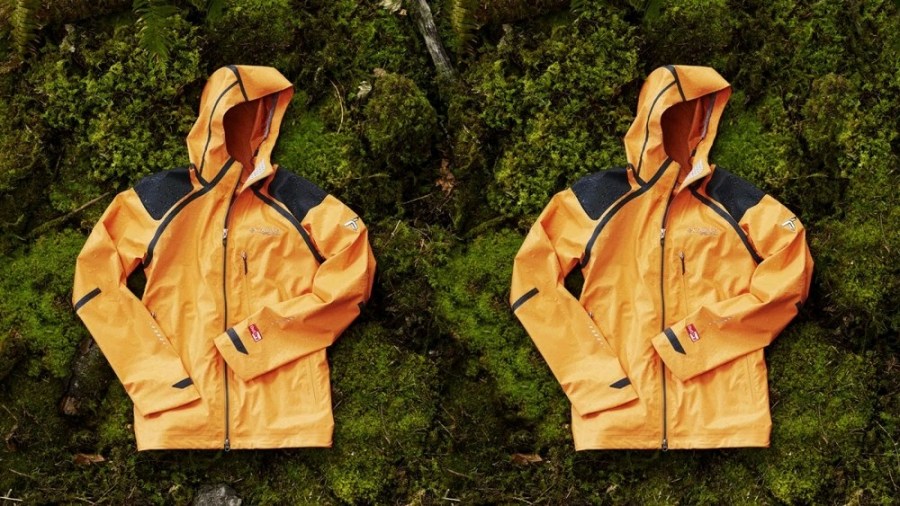Will Renwick gives his verdict on this highly innovative take on a waterproof jacket by Columbia
I was first introduced to this jacket at the OutDoor show in Germany last July and I was immediately intrigued. It looks like it’s made out of the same kind of material as a deep sea fisherman’s jacket, or one of those waterproof duffel bags.
Most jackets rely on a number of layers for their overall performance; this one trusts in just one rubbery-looking shell. Simply by the look of it I knew it would offer protection from the rain. But would that be at the expense of any breathability?
A bit further down the line I was able to put this question to the jacket’s designer, Woody Blackford, who’s been working on Columbia’s innovation and design since 2005.
“It’s going to be more breathable than any other jacket you’ve worn,” Woody told me. Pointing to the coat’s shell he said: “If this was a conventional jacket, this outer layer you can see would have textile covering it, and that textile in the rain is a problem; it has spaces between it that water will eventually get into – it wets out. Once that happens any inner moisture that gets through the membrane then has to get through that outer later as well. I got tired of this, so I thought what we need to do is take that waterproof part and make that the outer layer.”
It sounds an obvious solution to the wetting-out problem, but then how is the waterproof membrane protected? To make up for the lack of a protective outer fabric, Woody says they “re-engineered the membrane to make it tougher.”
Might there be a trade-off here then? No fabric means more breathability, according to Woody, but if the membrane has to be toughened wouldn’t this make it harder for moisture to escape? Time for some field testing.
The jacket has plenty of features you’d want with a hillwalking – or even mountaineering – jacket. The hood is big enough to take a helmet, it’s peaked (though the peak isn’t stiffened) and the volume is adjustable.
Details
The cuffs have Velcro adjusters and they can be pulled over gloves, and there’s a cord to adjust the hem. It’s not an athletic fit – it seems that more consideration has gone towards allowing room to wear a midlayer underneath. Most of the zips use LightRail waterproofing (similar to YKK): on the pit zips, breast pockets and in the hardwarmer pockets – both of which are large enough to be used when wearing a hipbelt or harness and will also hold a map.
The main zipper doesn’t use this LightRail waterproofing however, and it doesn’t have a storm flap over it, only an inner one. I went out in the jacket on a wet day in the Brecon Beacons and no moisture got through this zip, but in torrential rain and high winds I wonder if a little might.
I ran it under a tap and a touch of moisture did show on the inner flap. In terms of the jacket’s unique shell material, it looks thick and heavy but is surprisingly thin and light, and it’s still definitely tough enough to stand up to any potential snagging from branches.
The taped seams certainly manage to withstand any moisture, and I think are used to good effect in the actual look of the jacket. Inside, it’s kept off the skin by a soft and ultra-thin lining that’s completely bonded to the shell and is designed to wick away any moisture.
Breathable?
So did the jacket feel as breathable as Woody proclaimed? I think Columbia has got things right here. It was certainly pleasant to not have that lingering dampness that comes from a jacket wetting out, and the toughened membrane didn’t seem to make it feel any clammier than comparable jackets.
It would be uncomfortable if the pit zips weren’t there, but a large number of jackets have these anyway and I don’t see much of a downside to them. On top of all this there’s no need for the controversial perflourinated chemicals involved with DWR treatment as there’s no fabric that needs to be made water resistant – so it gets some kudos for this.
While the exterior membrane is innovative, it does have one problem: it’s very noisy. It rustles loudly, even with the swing of your arms at each step and some might consider this an irritation.
Still, I think the high level of performance more than compensates for that. The jacket it part of Columbia’s Outdry Extreme range for men and women – out now.







